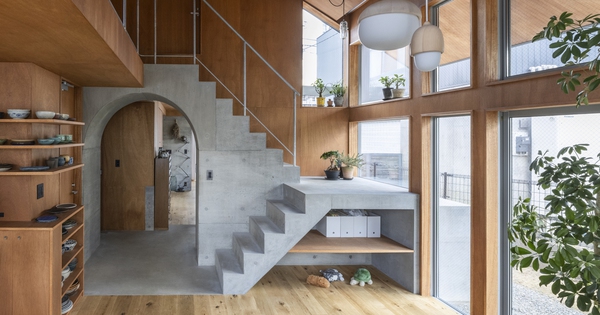Dong ThapFor the second time after more than 30 years of attachment, the rare red-crowned crane has not returned to Tram Chim National Park, Tam Nong district.
On May 23, Mr. Nguyen Van Lam, Director of Tram Chim National Park, said that up to this point the cranes have not returned to the national park as usual, like the time they were absent two years ago. In recent years, there are times when cranes come back less, but still maintain from 3 to 23 cranes per year. In the winter of the 1980s, the national park recorded thousands of cranes returning, only leaving in the spring.

The red-crowned cranes once returned to live in Tram Chim National Park. Image: Nguyen Van Hung
Tram Chim National Park is 7,500 hectares wide, is a wetland, recognized as the 2,000th Ramsar (wetland conservation area) in the world and the fourth in Vietnam. This place has many precious bird species, especially the red-crowned crane – listed in the Red Book. The cranes usually fly from Cambodia to the garden to feed, stay from December to April next year and then leave. During this time, the garden also attracts tourists to admire and take pictures of rare birds.
Master Nguyen Hoai Bao, Deputy Director of the Wetland Research Center (HCMC University of Natural Sciences), a crane conservation volunteer at the International Crane Association, also recorded a few top cranes this year. red only flew across the species reserve – habitat Phu My (Kien Giang) but did not stop. Last year, three cranes returned to Tram Chim National Park, this year they have not returned.
According to the International Crane Society, it is estimated that there are 15,000-20,000 red-crowned cranes worldwide, of which 8,000-10,000 are distributed in India, Nepal, and Pakistan. In Indochina countries (mainly Vietnam and Cambodia), from 2014 recorded about 850 red-crowned cranes, but by 2014 there were 234 cranes, and by 2020 it is estimated that there will be 179 individuals.
Master Bao said the decline of cranes in Vietnam shows that the natural ecological environment has been seriously degraded, especially natural wetlands and agricultural production areas. For example, in the Central Highlands, formerly a large dipterocarp forest where cranes breed, now it is a rubber plantation, sugarcane field, cashew field… The wetlands around the Lake were once a wasteland or rice paddies. one crop, now most of them are growing rice for 2-3 crops.

Area A4 – which is the main feeding ground for red-crowned cranes in Tram Chim National Park this year is absent of cranes. Image: Ngoc Tai
Particularly in the Mekong Delta, the conversion of natural wetlands to aquaculture or rice cultivation and the abuse of chemicals in agriculture have disrupted the ecological balance. Cranes have almost no chance to survive. In protected areas, water storage to prevent forest fires reduces biodiversity, especially grasslands. This causes the disappearance of the red-crowned crane.
Dr. Tran Triet, an expert on cranes, said that “technically”, Vietnam “no longer has cranes”. Because in 2022, cranes fly over Vietnam, but in the afternoon they fly back to Cambodia to sleep. According to this expert, 7 years ago in the country, 11 sick cranes were discovered, only two were saved. “Sick and dead cranes like this show that the environment is having problems. Even in the future, people still sometimes find dead cranes in the fields,” said Mr. Triet.
The red-crowned crane has a prominent red head and neck; stripes on wings and tail gray. The beak and front of the crane’s head are blue, with red legs. Adults are 1.5-1.8 m tall, with a wingspan of 2.2 – 2.5 m, and weigh 8-10 kg. The crane’s favorite dish when returning to Vietnam is tapioca root along with snails, crabs, fish, and mice.
Ngoc Tai
at Blogtuan.info – Source: vnexpress.net – Read the original article here



